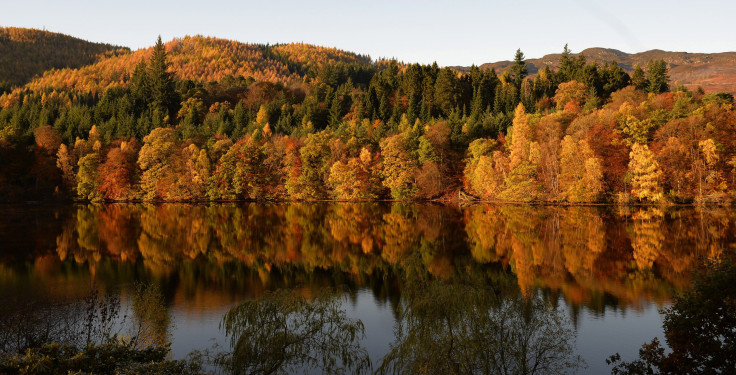Autumnal Equinox 2014: Facts And Trivia For The Celestial Event Marking The First Day Of Fall

The autumnal equinox, which marks the first day of fall for the Northern Hemisphere, takes place Monday at 10:29 p.m. EDT. Instead of saying goodbye to summer, one should say hello to the fall. While the autumnal equinox does not have a tradition like the "egg standing on its end" legend associated with the vernal equinox, there are some interesting facts and trivia associated with the event.
12 Hours Of Light And 12 Hours Of Darkness
While this autumnal fact is technically true, there is the caveat that sunrise and sunset are not instant events and the sun can be seen even after it sets. "On the equinoxes, the very center of the Sun sets just 12 hours after it rises. But the day begins when the upper edge of the Sun reaches the horizon (which happens a bit before the center rises), and it doesn't end until the entire Sun has set," the Farmer's Almanac says.
Watching The Path Of The Sun
As the sun travels across the celestial equator, which means shorter days and longer nights for the Northern Hemisphere while the Southern Hemisphere can celebrate longer days and shorter nights, it will rise due east and set due west. If you so happen to be standing on the Equator during the autumnal equinox, you can see the sun pass directly overhead. These two events also occur during the vernal equinox. The autumnal equinox also marks the start of six months of continuous darkness at the North Pole and six months of continuous daylight at the South Pole.
Autumnal Equinox Traditions
September's equinox is celebrated in many cultures. Pagans celebrate Mabon during the autumnal equinox, one of eight Sabbats, that mark the start of winter. Much like Easter, which falls around the vernal equinox, Christianity celebrates Michaelmas, the feast of St. Michael and All Angels.
© Copyright IBTimes 2025. All rights reserved.






















